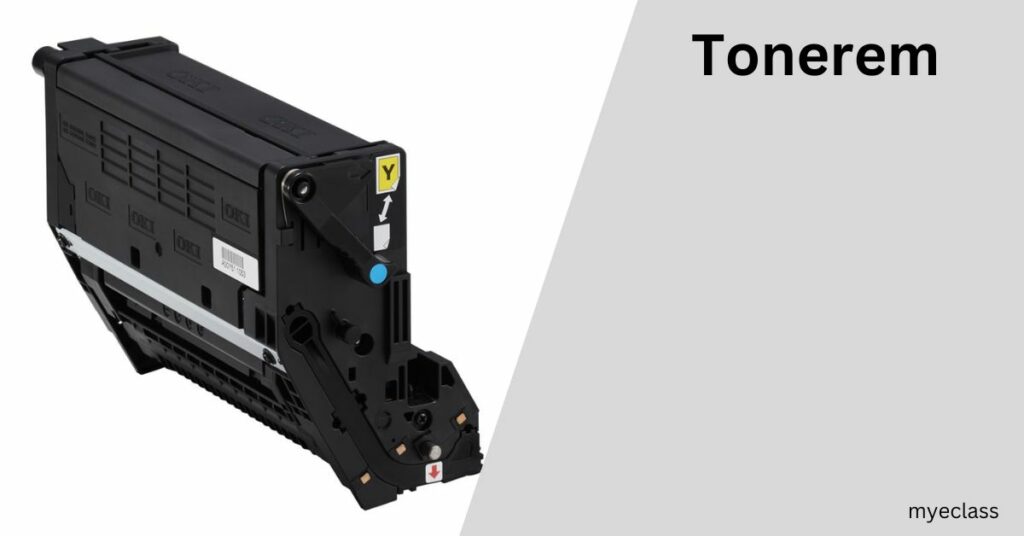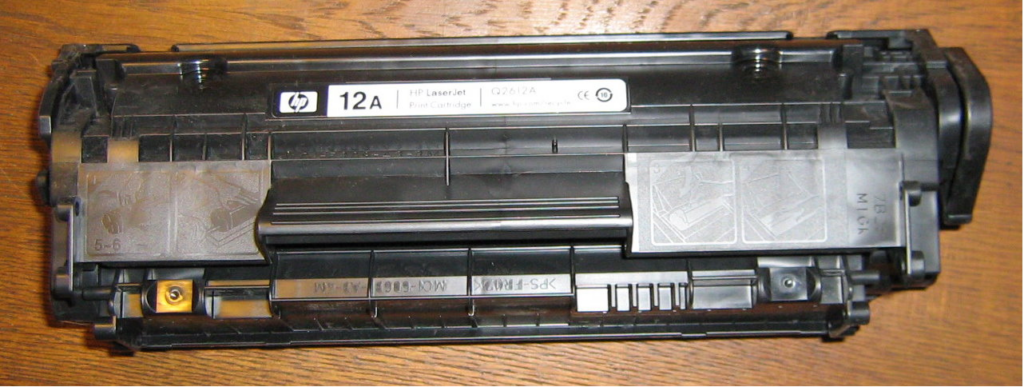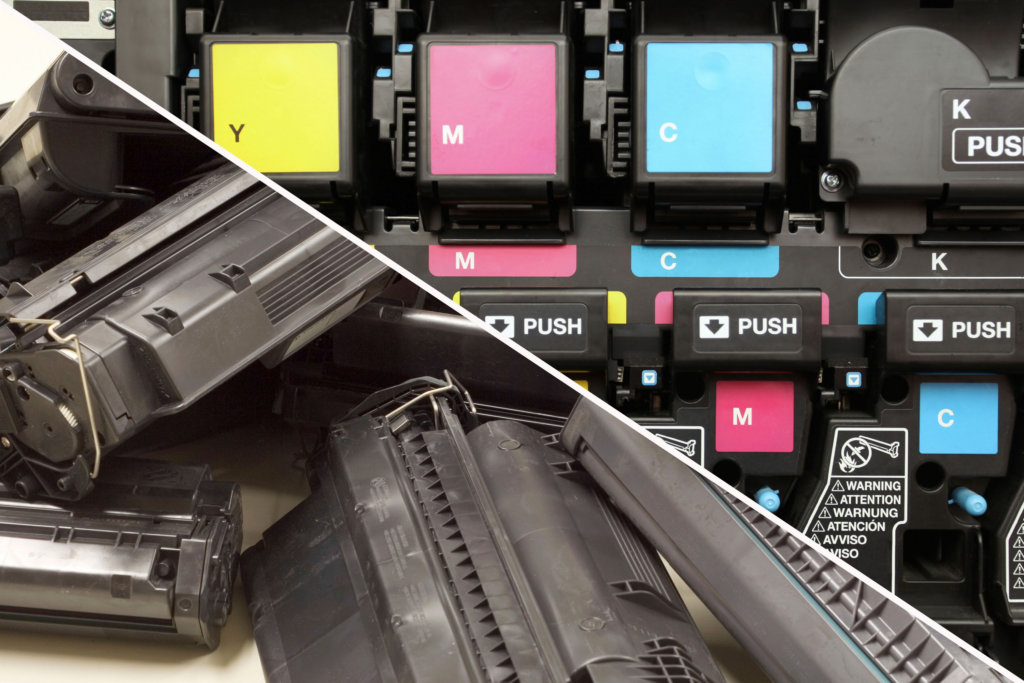Unveiling the Secrets of Toner Cartridges: Tonerem Demystified

Introduction:
Toner cartridges, commonly known as “Tonerem,” stand as essential components in the realm of laser printing. They hold a pivotal role in the conversion of digital data into tangible documents, catering to both personal and professional printing needs.
This extensive guide will delve deep into the intricacies of toner cartridges, dissecting their inner workings, diverse variations, pricing dynamics, environmental considerations, and a comparison with their inkjet counterparts.
Table of Contents
The Inner Workings of Toner Cartridges:
Toner cartridges transcend mere containers for toner powder; they are intricate devices in their own right. Within these cartridges reside a delicate concoction of plastic particles, carbon, and black pigment, collaborating harmoniously to craft the text and images that grace our paper.

The magic unfolds when the toner material is transferred to paper through an electrostatically charged drum unit and then permanently fused onto the paper by heated rollers during the printing process. In stark contrast to ink cartridges, toner cartridges won’t leave your hands stained, although they can be messy if mishandled.
Varieties and Components:
Toner cartridges do not adhere to a one-size-fits-all philosophy. They come in diverse iterations to meet a multitude of printing requirements. Low-end to mid-range laser printers typically involve two consumable elements: the toner cartridge itself and the drum unit. The toner cartridge typically offers a lifespan of approximately 2,000 pages, while the drum unit can extend to around 40,000 pages.
Read: Edutour2oman – Cultural Guide
Some toner cartridges incorporate the drum unit into their design, allowing for the simultaneous replacement of both components, albeit at a higher cost. This mirrors the functionality of ink cartridges in inkjet printers, rendering toner cartridges versatile for a wide array of printing applications.
Tonerem Pricing and Obstacles:
One of the common hurdles associated with toner cartridges is their cost, particularly when sourced from the original printer manufacturers. In certain instances, the price of toner cartridges can surpass the cost of the printer itself. This predicament is particularly prominent with budget-friendly laser printers, which frequently come equipped with cartridges containing significantly less toner than standard ones, necessitating more frequent replacements.
Read: The Art of Xatpes: A Fusion of Music and Visuals
To counter these challenges, many companies provide generic replacement toner cartridges at a fraction of the cost. These cartridges can be either new or re-manufactured, presenting a cost-effective alternative. Additionally, toner refill kits are available, enabling users to replenish empty cartridges and reduce their environmental footprint.
Page Yield and Standardization:
Page yield emerges as a pivotal metric for toner cartridges, signifying the number of pages a tonerem can produce. Manufacturers generally furnish estimated yield figures to offer consumers an insight into what to anticipate. Nevertheless, over the years, these yield figures have exhibited significant variances among manufacturers, rendering it arduous for consumers to conduct product comparisons.

In response to this, the International Organization for Standardization (ISO) has issued standardized yield criteria for both monochrome and color toner cartridges. These standards have ushered in greater uniformity to the industry, although real-world performance can still deviate considerably from ISO estimations.
Smart Chips and Environmental Concerns Surrounding Toner Cartridges:
Certain toner cartridges are outfitted with smart chips, mirroring their counterparts in inkjet printers. These chips impose limitations on the number of pages that can be printed, a practice that can stimulate cartridge sales and give rise to environmental concerns due to heightened waste generation.
Read: How To Go On Your Locker On Myeclass? – Step By Step
To circumvent these restrictions, reset devices are available, allowing users to bypass the constraints imposed by these smart chips. Interestingly, some laser printers gauge toner levels using optical mechanisms instead of chips, rendering the chips obsolete and diminishing waste generation.
Types of Cartridges:
Toner cartridges manifest in three primary types:
OEM (Original Equipment Manufacturer): These cartridges are crafted by the printer manufacturer and are commonly referred to as “genuine.” Although they tend to be more expensive, they come with guarantees of quality and compatibility with your printer.
Compatible: Compatible cartridges are manufactured by third-party companies and marketed under various brand names. They generally present a more budget-friendly option but may vary in quality and reliability, making them a favored choice for budget-conscious consumers.
Re-manufactured: Re-manufactured cartridges are those that have been refilled and refurbished, delivering a cost-effective and eco-friendly alternative. They contribute to waste reduction by extending the life of the cartridge.
Ink vs. Toner: Distinguishing the Discrepancy

Ink and toner cartridges cater to distinct printing needs:
Ink Cartridges:
Contain liquid and are tailored for use in inkjet printers.
Can be categorized as dye-based or pigment-based, each with varying attributes in terms of durability and print quality.
Find their niche in home use, excelling at producing vibrant color prints but being susceptible to smudging and fading.
Toner Cartridges:
- Contain dry powder and are utilized by laser printers.
- Are less prone to staining but can prove messy when mishandled.
- Are ideally suited for high-volume text printing, with some limitations for photo printing due to tonal constraints.
- Choosing the Right Printer
Selecting the appropriate printer hinges on your specific printing prerequisites. Inkjet printers find favor among families, photographers, and small home offices, especially when the need for quality photos and color prints is paramount.
Read: How To Connect With My Teacher On Myeclass
In contrast, laser printers stand as the preferred choice for high-volume text printing, rendering them ideal for small to medium businesses and educational institutions. While laser printers may not excel in photo printing, color laser printers can infuse a dash of color into everyday documents.
Conclusion:
Toner cartridges, or “Tonerem,” serve as the unsung heroes responsible for the precise and clear text and images that adorn our pages. This comprehensive guide has illuminated the inner workings of these essential components, their diverse variations, pricing challenges, environmental considerations, and a comparative analysis with ink cartridges. Empowered with this knowledge, you can make educated decisions about your printing needs, ensuring optimal value for your investment.


